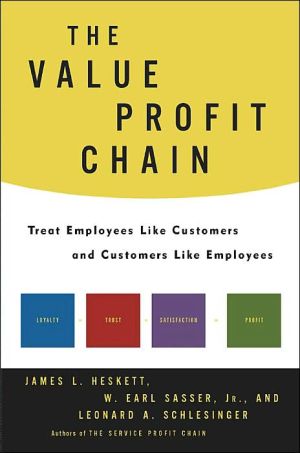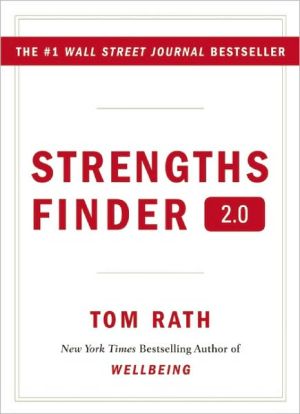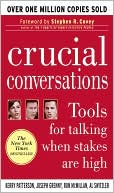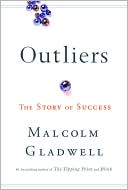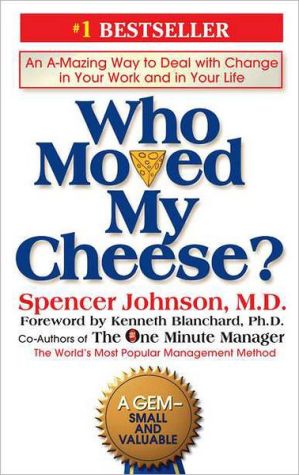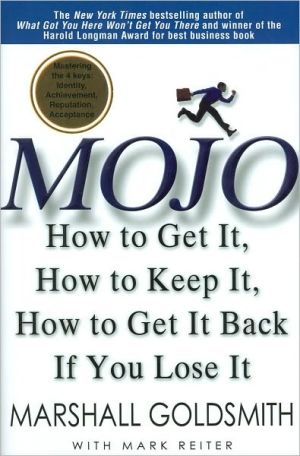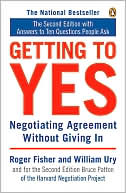The Value Profit Chain: How to Manage Employees Like Customers and Customers Like Employees
James Heskett, Earl Sasser, and Leonard Schlesinger reveal powerful new evidence that paying close attention to the employee-customer relationship will enable any organization to be a low-cost provider and achieve superior results — proving that you can have it all, a goal thought inadvisable just a few short years ago. At the heart of this bold assertion is the authors' indisputable conclusion supported by thirty-one years of groundbreaking research: today's employee satisfaction, loyalty,...
Search in google:
James Heskett, Earl Sasser, and Leonard Schlesinger reveal powerful new evidence that paying close attention to the employee-customer relationship will enable any organization to be a low-cost provider and achieve superior results — proving that you can have it all, a goal thought inadvisable just a few short years ago. At the heart of this bold assertion is the authors' indisputable conclusion supported by thirty-one years of groundbreaking research: today's employee satisfaction, loyalty, and commitment strongly influences tomorrow's customer satisfaction, loyalty, and commitment and ultimately the organization's profit and growth — a quantifiable set of associations the authors call the value profit chain.In what may be the most far-reaching study ever undertaken of the strategic importance of the employee-customer relationship, Heskett, Sasser, and Schlesinger offer profound new insights into the life-long value of both employees and customers and the increasingly important concept of employee-relationship management. Readers will discover how organizations as diverse as aluminum maker Alcoa, travel agency Rosenbluth International, and the Willow Creek Community Church treat employees like customers (in the case of Willow Creek, volunteers as well). Conversely, the authors show how advertising agency Merkley Newman Harty and financial services provider ING Direct treat customers like employees, pursuing the ones they want most. At the Vanguard Group, Cisco Systems, and Southwest Airlines, both practices are common. The authors explain how these organizations and many others — whether large or small, public or private, or not-for-profit— achieve profitability and growth or the equivalent by leveraging results and process quality to deliver differentiated products and services at the lowest cost.Timely, essential, and important reading, The Value Profit Chain should be readily accessible on the desk of every forward-thinking manager. Publishers Weekly Serving employees well and knowing when to "fire" a customer will boost a firm's bottom line, according to this team of Harvard Business School professors. The authors of The Service Profit Chain here stress the creation of lifetime customers and detail the complex relationship between employee satisfaction, customer retention and profitability. They use examples from firms including Federal Express, Southwest Airlines and Wal-Mart. The highly successful Southwest Airlines, for example, couldn't deliver its much-envied 25-minute aircraft turnaround, from arrival to departure from the gate, without a dedicated, team-oriented staff that's vested in the company. That's why all Southwest employees with more than six months of service hold ownership stakes in the firm. Perhaps more important is how Southwest manages customers that must be "targeted, selected, and `trained' in the unusual ways of the airline-no assigned seats, no meals, no connections with other airlines." By turning high-maintenance customers away, the firm stays profitable. These anecdotes aside, the book is laden with b-school sentences, e.g., "The value concept is achieved with maximum benefit for customers, employees, partners, and investors through an operating strategy that seeks to leverage results over costs by means of such factors as organization, policies, processes, practices, measures, controls, and incentives." With text like this and numerous charts and diagrams, the book will appeal mainly to academics and business professionals. However, there are a few nuggets that will appeal to a broader audience, like the fact that the greeters near the entrance to Wal-Mart stores were originally put there to reduce shoplifting. (Jan. 9) Copyright 2002 Cahners Business Information.
Preface\ Our research over the past three decades has led us to conclude that winning organizations:\ 1. Have strategies encompassing well-aligned cultures as well as market and operating foci designed to deliver results and process quality (versus products and services) to important constituencies. \ 2. Achieve results and process quality through the following:\ adherence to promoting relationships in what we call a value profit chain, one designed to foster customer, employee, partner, and investor loyalty, trust, commitment, and ownership. \ reliance solely on those measurements and incentives that reflect primarily the means of achieving the strategy and, secondarily, the goals of the strategy.\ establishment of strong cultures (based on widely shared values) that foster adaptive behavior as well as the development of ideas and people.\ \ 3. As a result, achieve superior "brand" franchises, encompassing all those things that contribute to an organization's long-term status as the preferred seller, buyer, employer, neighbor, or place to invest.\ \ This work, which was inspired by scholars we cited at the time, stimulated many other researchers to test our conclusions in a variety of business settings. More than 40 examples of this effort, all based on empirical research, are reviewed in Appendix A. All but two supply evidence supporting our conclusions concerning one or more of the links in the value profit chain. We believe we can provide possible explanations for the exceptions.\ Ideas embodied in the value profit chain are regularly employed today by consulting organizations large and small. One of the most comprehensive of these efforts, supported by findings from detailed analyses of a large database of experience, is even touted as a "total blueprint for worldwide capital."\ Our homework in support of value profit chain thinking began with the introduction of a new course, Management of Service Operations, into the Harvard Business School curriculum by Earl Sasser in 1972. This inspired other research that resulted in the publication of three books. The first of these essentially laid out the hypotheses that would later evolve into value profit chain concepts. The second examined ways in which these concepts were being applied to create what we called service breakthroughs. The last provided, through research in more than 200 large corporations, factual evidence about the kinds of strong corporate cultures that did — and did not — support outstanding long-term performance.\ The work continued with the publication of a Harvard Business Review article, "Putting the Service Profit Chain to Work," in 1994 and a book that expanded on the theme. The article and the book presented evidence to support a set of relationships accounting for much of the corporate profitability and growth that we had been observing throughout a collective experience of nearly 100 years of teaching, consulting, and managing. It was intended to provide a fact-based roadmap for leaders of for-profit and not-for-profit service organizations wishing to upgrade the performance of their organizations, based on a pattern of experiences observed in the very best service organizations, ranging from Southwest Airlines (from shortly after its founding to the present) to the New York Police Department (under then-commissioner William Bratton).\ Our goal was to set forth an organizing framework that was simple, workable, measurable, and memorable — all essential to effective implementation. The service profit chain and its related concepts served the purpose on all counts. It was so simple and intuitive that it has been labeled obvious by some of our critics, a label we regard as the ultimate compliment. In a sense, our goal was to provide a cookbook intended to demystify a number of overly complex management concepts, not unlike what Julia Child achieved in simplifying and providing wide access to the intricacies of French cooking in her writings and television programs.\ Our past work, concentrated primarily in the service sector, raised more questions than it answered, among them the following: (1) Can these ideas that have worked well in greenfield start-ups provide the basis for transformational change in ongoing enterprises? (2) Can they be applied in manufacturing as well as service-providing firms? (3) Assuming the ideas are applicable, where does one start in introducing change into an existing large organization? (4) Regrettably, more recently, how do these ideas hold up in the face of a massive "discontinuity," such as the terrorist attacks of September 11, 2001, or economic contractions associated with a recession? Over the past 5 years, we have had an opportunity to come up with responses to these questions, albeit responses that may lead to yet other questions.\ Value is the uniting theme running throughout our recent observations and measurements and those of others. We are speaking here of value for all major constituents of an organization: its clients, its employees, its suppliers, its investors, and its communities, among others. This includes value for organizations that are manufacturers or service providers. It also includes value for important stakeholders in both for-profit and not-for-profit organizations.\ The goals are to (1) maximize value in a web of relationships and (2) ensure that value is distributed in ways that are perceived as fair. Value improperly apportioned among important stakeholders leads to eventual failure, as so many Internet start-ups demonstrated in recent years. In an attempt to impress potential customers with free or nearly free goods and services, the start-ups, under the "get big fast" mantra, neglected value for many investors and employees. Unless value generates value for all important players in the chain, there is no fuel to drive the next cycle of the socioeconomic internal combustion engine.\ It is easy to assume that everything is managed for value of some kind. Who wouldn't attempt to achieve it? If this is the case, however, why are only a few organizations able to deliver on the promise and many more of their competitors unable to do so? Further, surprisingly few organizations are capable of completely rethinking their businesses. Fewer yet identify with any enthusiasm and creativity the core values that guide the enterprise. Finally, only a select circle of managers has the mind-set and skills to manage the change required. What can be done about this are issues to be addressed here.\ We know much more now than we did only several years ago. For instance, we have learned that organizations achieving what is described earlier:\ 1. Don't have to trade off objectives of achieving low cost or a differentiated position in the minds of customers (something Collins and Porras in their landmark book, Built to Last, have labeled "avoiding the Tyranny of the OR, and embracing the Genius of the AND.") \ 2. Know no bounds, either in terms of geography or organizational reach; they can organize and lead entire supply chains.\ 3. Can achieve astounding size, encompassing a million employees or more.\ \ We have also learned that the concepts set forth in The Service Profit Chain are not confined to the creation of greenfield organizations we have studied closely — the Southwest Airlines, the Cisco Systems, and the Wal-Marts — whose founders and leaders understood them (and continue to understand them) well. They can be employed in rethinking and remaking organizations — in managing organizationwide change, either under the pressure or in anticipation of crises, as we have seen in organizations as diverse as IBM, Alcoa, Office Depot, and the Willow Creek Community Church, or they can be employed to reenergize organizations to sustain outstanding performance, as at General Electric.\ The last 20 years, beginning with the publication of Tom Peters' and Robert Waterman's book, In Search of Excellence, have produced a myriad of "roadmaps" for managers. A veritable blizzard of disparate ideas, such as economic value added, culture change, differentiation, the profit zone, customer relationship management, the value chain, knowledge transfer, supply chain management, and the balanced scorecard, confronts the thoughtful manager today. The intensity of interest in these ideas has been heightened by the speed with which organizations have experienced such phenomena as globalization, deregulation, and privatization. The technological advances leading to the so-called New Economy have given new emphasis to the need for speed in management decision-making and implementation. The turn of the century — ushered in with a visible increase in terrorism-inspired reflection on personal values, lifestyles, and work styles — is prompting much speculation about the nature of the twenty-first-century company. Without an organizing concept based on empirical research and fact, today's leaders are faced with a daunting, somewhat confusing, ideologically biased, and potentially disruptive body of ideas. The value profit chain is just such an organizing concept. It provides the missing link between many of these management roadmaps.\ Copyright © 2003 by James L. Heskett, W. Earl Sasser, Jr., and Leonard A. Schlesinger\ All rights reserved, including the right of reproduction in whole or in part in any form.\ Introduction\ Success driven and sustained by value profit chain thinking starts with attention to what we call the "performance trinity," comprising leadership and management, culture and values, and vision and strategy. The third of these elements is "hard" in character but the easiest to formulate. The real challenge is in the first two "soft" elements. The performance trinity is implemented in the context of a world of sociological, technical, regulatory, and economic change. While providing the starting point for sustainable change, it is also a backdrop for other value profit chain concepts. It is the foundation for achieving five value profit chain virtues — leverage, focus, fit, trust, and adaptability — leading to a sixth, value for customers, employees, partners, and investors. Of these, trust and adaptability result from winning cultures and values. Leverage, focus, and fit are largely achieved through vision (goals) and strategy (ways of achieving the goals), something we call the strategic value vision.\ The strategic value vision targets customers for which value is to be created, primarily through the vehicle of a "value concept" — a business definition — based on results and the way they are to be attained (process quality), not products or services. The value concept is achieved with maximum benefit for customers, employees, partners, and investors through an operating strategy that seeks to leverage results over costs by means of such factors as organization, policies, processes, practices, measures, controls, and incentives. All this is supported by a value delivery system comprising elements of an organization's infrastructure.\ The virtues of leverage, focus, fit, trust, adaptability, and value are achieved through an array of levers. Foremost among these are information technology, knowledge transfer, supply chain management, value exchange, operating strategy, and such financial concepts as economic value added, all representing important elements of operating strategy in the strategic value vision. The relationships between elements of the performance trinity, value profit chain virtues, strategic value vision, and these levers are illustrated in Figure 1. The levers in turn fuel the value profit chain itself.\ The value profit chain, core to sustaining outstanding performance, is shown in Figure 2. It is based on "value equations" for customers, employees, partners, and investors. For customers, the appropriate value equation is\ Value =\ Results + Process Quality\ Price + Customer Access Costs\ \ For employees, it is adapted to read:\ Value =\ Capability + Work Place Quality\ 1/Wages + Job Access Costs\ \ Important to this thinking, which is based on empirical research, is that elements of the cycle are self-reinforcing. Employee value leads to the satisfaction, loyalty, and productivity that produces customer value, satisfaction, loyalty, trust, and commitment. Satisfied, loyal, trusting, and committed customers are the primary driver of company growth and profitability, important determinants of investor value. Finally, the fruits of growth and profitability are reinvested in value for partners (suppliers, communities, and others), employees, customers, and investors.\ Some of the best examples of value profit chain thinking are organizations that were established on the basis of many of these ideas. They include Southwest Airlines, Wal-Mart, the Vanguard Group of mutual funds, ServiceMaster, and Shouldice Hospital, organizations from which we have learned a great deal firsthand. What about leaders of organizations that were not founded on these ideas, organizations seeking to become more than just merely good? How do they cut into these seemingly self-contained, self-reinforcing relationships? Where do they start in the process of developing sustainable performance excellence? How do those organizations achieving value profit chain excellence sustain their positions in a rapidly changing competitive environment?\ Further research as well as practical experience since our earliest writing suggests some very clear starting points. The few quantitative studies of cause and effect support practical experience and management intuition. Change begins with a leadership team capable of creating value for employees, among other factors centered around employees' capability to deliver results to valued customers. It is driven by a reevaluation of culture and values just as importantly as it is by new visions or strategies. It is led, not merely managed.\ In just the past few years, value profit chain concepts have been used as an underlying driver of change to one degree or another in a wide range of organizations, including Harrah's Entertainment, Au Bon Pain, Taco Bell, Omnicom, AC Nielsen, Office Depot, Limited Brands, American Express, PNC, Continental Airlines, Sears, SYSCO, and Loomis Fargo in the United States. In other countries, the list includes British Airways, BUPA (in England), CEMEX (in Mexico), Swedbank (Sweden), the Bank of Ireland, and the Nova Rede division of Banco Comercial de Português.\ Organization of the Book\ We begin by revisiting the remarkable accomplishments of two organizations that have delivered value to customers, employees, partners, and investors for years — Wal-Mart Stores and the Vanguard Group of mutual funds. Both have risen to leadership positions in their respective industries by maintaining a strict adherence to value profit chain thinking. Because these organizations were based on value profit chain concepts from the outset of their development, we next turn to companies such as IBM that have more recently realized growing success through a transformation based on this kind of thinking.\ The process of leading change requires either the presence or the creation of dissatisfaction with the status quo within an organization. Without this, the foes of change — stasis and equilibrium — continue to prevail. The second section of the book suggests ways leaders can disturb the equilibrium and develop such dissatisfaction, ways we have found useful in our work. The first of these, addressed in Chapter 3, is the estimation and communication of information about customer lifetime value, a process that often yields astounding information and a wake-up call to management to reduce customer defections. The second, the subject of Chapter 4, is an estimation and communication of employee value, a process that inevitably elevates the importance of retaining productive talent in an organization. Finally, in Chapter 5, we address ways of mobilizing for change by challenging strong, often nonadaptive, cultures. Here the experiences of James Kinnear, then president and CEO of Texaco Inc., are both remarkable and instructive.\ Once awareness of the need for change has been created, it is important to turn to ways of engineering value profit change through superior models and processes for action. The starting point is a reengineering of the performance trinity. The experiences at Office Depot, the world's largest office supply organization, suggest that there is a hierarchy within this trinity in which leadership and management first influence culture and values and then develop a vision and strategy, all of which have a high degree of "fit" with one another.\ The final four chapters of this section deal with levers for change. Chapters 7 and 8 deal with two important stakeholders that drive performance, employees and customers. They argue that in working with employees we can learn a lot from insights about how to treat customers, as is the case in organizations as different as Cisco Systems and the Willow Creek Community Church. The reverse is also true, as we see in a subsidiary of one of the largest global providers of marketing communications and services. Chapter 9 concentrates on the long-term significance of a very simple but powerful concept, value exchange — what an organization gets for what it gives in relating to customers, employees, and others by utilizing the levers of information technology and knowledge transfer. Experiences at Capital One, a leading practitioner of the concept, help us understand how it must extend to all links in the value profit chain to be truly effective. Finally, Chapter 10 reviews other important levers for achieving value (leveraging results and process quality over cost) in the chain, utilizing what we have learned over 27 years of contact with Southwest Airlines, during which time we and our colleagues have prepared several case studies of the organization.\ Once value is achieved for employees, customers, partners, and investors, the primary challenge is to cement the gains and sustain performance. This involves revisiting the core values, those shared beliefs that provide the heart of an organization's culture, in ways illustrated by IBM, Johnson & Johnson, Cisco Systems, and others, our concern in Chapter 11. It argues for the development of measures and methods for recognizing performance on important dimensions of the value profit chain through balanced scorecard concepts, as illustrated by experiences at Mobil, Sears, and others that are described in Chapter 12. Next, performance can be "hardwired" by redefining the very purpose of an organization in terms of solutions, then guaranteeing their delivery to customers. Efforts at CEMEX (for ready-mix concrete), Intuit (personal financial software), and eBay (the "people's" trading exchange), described in Chapter 13, provide important examples to suggest the potential in this concept.\ The book concludes with the ultimate method for sustaining organizations that set the pace in their fields of activity over long periods of time through listening, learning, teaching, best practice, and knowledge transfer, all behaviors requiring enlightened leadership that is all too rare these days. Here, rich examples from the Omnicom Group, a global advertising and marketing communications firm, and GE help shed light on the complex set of efforts needed to make "the corporate brain" function effectively.\ A Final Note\ In the process of exploring the value profit chain we have learned something about what we still don't know. Others have tested our ideas and discovered complexities in the relationships that we may not have described fully. We have been able to collect much more data and many more examples to suggest conditions in which the process of unlocking value in the value profit chain is particularly applicable.\ Most important, we have become convinced that the thinking behind the value profit chain provides a basis for sorting and organizing the confusing array of ideas for managers being advanced today. It helps bring order out of chaos while providing a basis for benchmarking an organization against best practice on various dimensions of the chain, as suggested in the audit we have included as Appendix B to the book.\ There has been a long-running debate about whether more value is created out of the formulation or implementation of strategy. A parallel debate has centered around strategy as primarily (1) a question of positioning an organization against competitive forces and the needs and relative power of important constituencies, or (2) a process of identifying and developing core competencies in capitalizing on a "position." Neither of these is a particularly useful debate because strategy formulation means so many different things to different people — everything from defining a business to setting goals to doing deals — and because of the overlap in strategy formulation and implementation or positioning and core competencies. To the extent that successful implementation requires the proper definition of the business in the first place by means of what we call a strategic value vision, we discuss strategy formulation in this book.\ However, you won't find us telling stories about how a clever, all-seeing CEO was able to switch his company out of one business and into another. (Why is it that only CEOs are credited with doing this in the popular write-ups when in fact it requires leaders at all levels?) Instead our primary interest is in documenting, through both stories and empirically based research, ways in which value profit chain thinking can be used to lead change in existing businesses in ways that significantly increase value for customers, employees, shareholders, and others while moving them from the ranks of the "merely good" to those of business sector leaders.\ Copyright © 2003 by James L. Heskett, W. Earl Sasser, Jr., and Leonard A. Schlesinger\ All rights reserved, including the right of reproduction in whole or in part in any form.
PrefaceIntroductionPt. IAchieving Value-Centered Change11The Value Profit Chain52Rethinking the Business Using Value-Centered Concepts34Pt. IIGetting Management's Attention513Measuring and Communicating Customer Lifetime Value534Measuring and Communicating Employee Value755Mobilizing for Change: Challenging Strong Cultures95Pt. IIIEngineering Value Profit Change1096The Performance Trinity and the Value Profit Chain1137Employee Relationship Management Treating Employees Like Customers1368Customer Relationship Management Treating Customers Like Employees1669Managing by Value Exchange18410Leveraging Value over Cost200Pt. IVCementing the Gains22311Identifying and Revisiting Core Values22712Developing Value-Centered Measurement and Recognition24513Hardwriting Performance26014Leading the Organization to Learn and Innovate275Afterword295App. ACompendium of Value Profit Chain Research301App. BThe Value Profit Chain Audit318App. CCalculating the Lifetime Value of a Customer338Notes345Index361
\ Publishers WeeklyServing employees well and knowing when to "fire" a customer will boost a firm's bottom line, according to this team of Harvard Business School professors. The authors of The Service Profit Chain here stress the creation of lifetime customers and detail the complex relationship between employee satisfaction, customer retention and profitability. They use examples from firms including Federal Express, Southwest Airlines and Wal-Mart. The highly successful Southwest Airlines, for example, couldn't deliver its much-envied 25-minute aircraft turnaround, from arrival to departure from the gate, without a dedicated, team-oriented staff that's vested in the company. That's why all Southwest employees with more than six months of service hold ownership stakes in the firm. Perhaps more important is how Southwest manages customers that must be "targeted, selected, and `trained' in the unusual ways of the airline-no assigned seats, no meals, no connections with other airlines." By turning high-maintenance customers away, the firm stays profitable. These anecdotes aside, the book is laden with b-school sentences, e.g., "The value concept is achieved with maximum benefit for customers, employees, partners, and investors through an operating strategy that seeks to leverage results over costs by means of such factors as organization, policies, processes, practices, measures, controls, and incentives." With text like this and numerous charts and diagrams, the book will appeal mainly to academics and business professionals. However, there are a few nuggets that will appeal to a broader audience, like the fact that the greeters near the entrance to Wal-Mart stores were originally put there to reduce shoplifting. (Jan. 9) Copyright 2002 Cahners Business Information.\ \ \ \ \ Library JournalUsing 28 years of Harvard Business School research on 200 companies, the authors of The Service Profit Chain aim to show how organizations can achieve greater results through what they term the "value profit chain." Using examples from such companies as GE, Wal-Mart, and Cisco Systems, they argue that organizations need to focus on providing what their employees, customers, investors, suppliers, and others value most. Focusing on value will bring about needed organizational change, and tying an organization to the most valued needs of its customers will make it more responsive to its markets. In addition, giving employees what they value in an organization will make them more productive and cut the costs of employee turnover. The authors conclude that a value approach will pay off in greater organizational effectiveness and profitability. This well-written and thoroughly documented study, intended for middle- and upper-level managers, is recommended for libraries serving businesses and business students.-Lawrence R. Maxted, Gannon Univ., Erie, PA Copyright 2003 Reed Business Information.\ \
